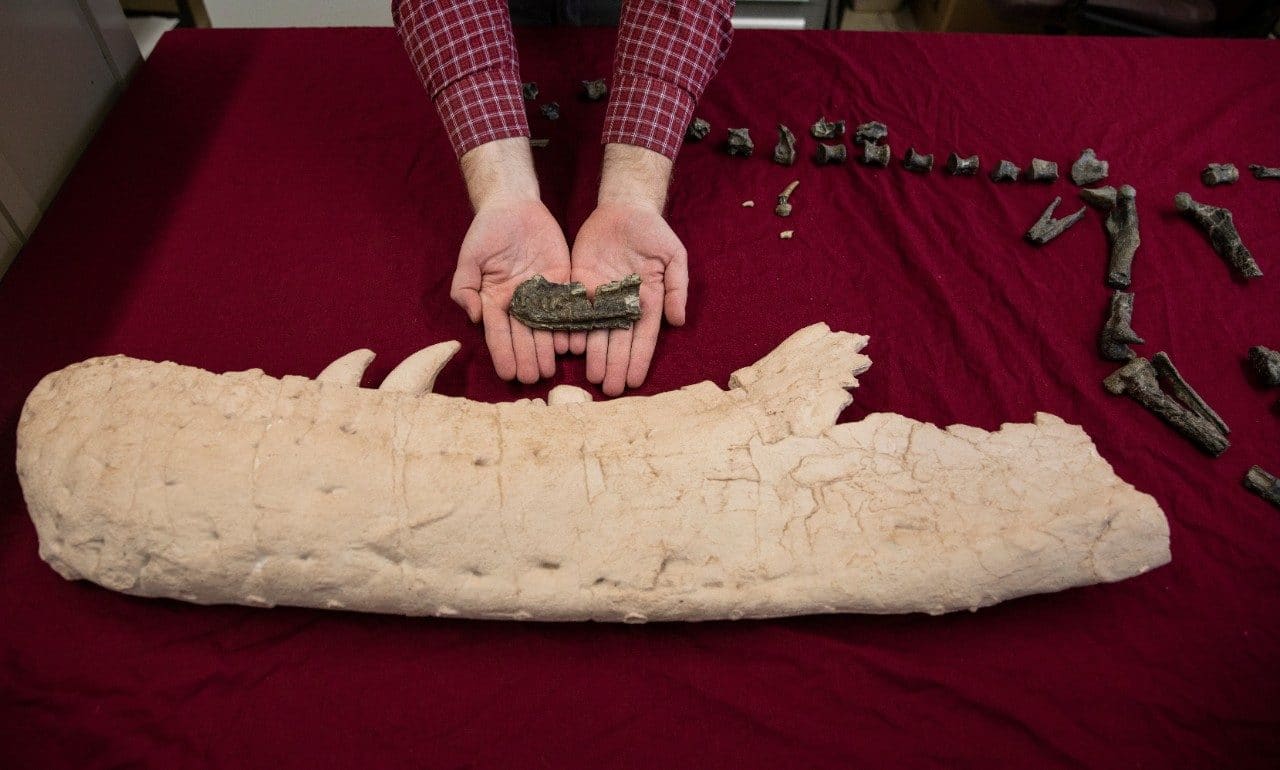A petite new addition to the tyrannosauroid lineage hints at how dinosaurs like Tyrannosaurus rex achieved their gargantuan size.

An artist’s rendering of the tyrannosauroid Suskityrannus hazelae from the Mid-Cretaceous, about 92 million years ago. Image Credit: Reconstruction by Andrey Atuchin
With an adult weight of over 10,000 pounds and a bite force that could literally explode the bones of its prey, the regal Tyrannosaurus rex (RIP) certainly lived up to its moniker of “tyrant lizard king.”
![Species New to Science: [Paleontology • 2019] Suskityrannus hazelae • A mid-Cretaceous Tyrannosauroid and The Origin of North American end-Cretaceous Dinosaur Assemblages](https://4.bp.blogspot.com/-p8wOY3G2kEw/XNFI_ri1nJI/AAAAAAADVCM/XRnGTgr9XGYykK_EcmTyivhokcrDePC0gCLcBGAs/s1600/Suskityrannus_hazelae-novataxa_2019-Nesbitt_Denton_Loewen_Brusatte_Smith_et-al--%2540SteveBrusatte.jpg)
But long before these carcass-crunching behemoths came onto the scene, some members of the tyrannosauroid superfamily, which arose during the Jurassic Period, could have clocked in closer to 200 pounds, packing all the heft of your garden-variety jaguar.
This might have been the case for the surprisingly teeny Suskityrannus hazelae, a newly discovered species that’s now filling an important gap in the tyrannosaur timeline. Measuring just nine feet from nose to tail at its time of death, this petite predator wasn’t much longer than the skull of its colossal T. rex cousin.

As their lineages probably split in the early Cretaceous, Suskityrannus isn’t thought to be a direct ancestor of T. rex. But at 92 million years old, Suskityrannus predates big-bodied tyrannosaurs by only 10 million years, potentially narrowing the window in which this group, which persisted till the demise of the dinosaurs, began living large.

The two specimens of Suskityrannus hazelae stacked up against the lower jaw of Tyrannosaurus rex. Image Credit: Sterling Nesbitt.
“Tyrannosaurs transitioned to larger sizes very quickly on the geologic time scale, and we’re not really sure why,” says Holly Ballard, a paleontologist at Oklahoma State University who was not involved in the study. “This is a really important specimen in that it could help explain…when the large size we are so familiar with actually appeared.”

Suskityrannus is also one of just a few species recovered from one of the most frustratingly fossil-poor eras of the Mid-Cretaceous. Between 94 and 90 million years ago, sea levels were at a high, eroding sediments that might otherwise have preserved the bodies of creatures roaming Earth at that time. Thanks to the era’s overflowing oceans, only a handful of North American archaeological sites managed to successfully entomb dinosaurs from this period, leaving a murky gap in the fossil record during the exact time when tyrannosaurs are thought to have ballooned in size.
“We don’t really have a lot of dinosaurs from this particular time period,” says Victoria Arbour, a paleontologist at the Royal British Columbia Museum who was not involved in the study. “So anything we find is a huge increase in our knowledge.”

But in 1998, a team of paleontologists excavating New Mexico’s Moreno Hill Formation, nestled in the homeland of the Zuni Native American tribe, hit pay dirt in the form of a fragmented femur.
“There it was, just sticking out of the mud,” recalls study author Sterling Nesbitt, now a paleontologist and geoscientist at Virginia Tech. Based on the bone’s shape, Nesbitt—who was just 16 years old at the time of the discovery—and his mentors deduced that it probably belonged to some kind of meat-munching dinosaur. The researchers spent the rest of the day scouring the landscape on their hands and knees, eventually recovering a jaw bone studded with a set of curved, carnivorous-looking teeth, confirming their suspicions.

The femur of Suskityrannus hazelae, protruding from the ground in New Mexico’s Zuni Basin in May of 1998. Study author Sterling Nesbitt, who was 16 at the time, points to the fragment. Image Credit: Noreen Nesbitt

Shortly after Nesbitt’s find, the researchers matched the specimen to another set of bones that had been unearthed at Moreno Hill the previous year. Together, the two sets of fossils comprised about 50 percent of a full skeleton, which is a “pretty spectacular in terms of completeness,” Nesbitt says.
But Suskityrannus was still a formidable foe in its own right. An analysis of its jaws and teeth also told the team that this pint-sized carnivore packed a seriously strong bite—a hallmark of the terrifying titans to come.
This mashup of features from earlier, smaller tyrannosauroids and their more recent, larger cousins “really [help] us understand Suskityrannus’ intermediate nature,” says Ashley Morhardt, a paleoneurologist at Washington University in St. Louis who was not involved in the study. “It’s really a very special fossil.”
“Suskityrannus fits the predictions that we have based on other fossils,” Zanno says. “Both of these specimens can add an extraordinary amount of understanding.”

Sixteen-year-old Sterling Nesbitt at the site of his discovery of the second specimen of Suskityrannus in 1998. Image Credit: Hazel Wolfe (for whom Suskityrannus hazelae is named)